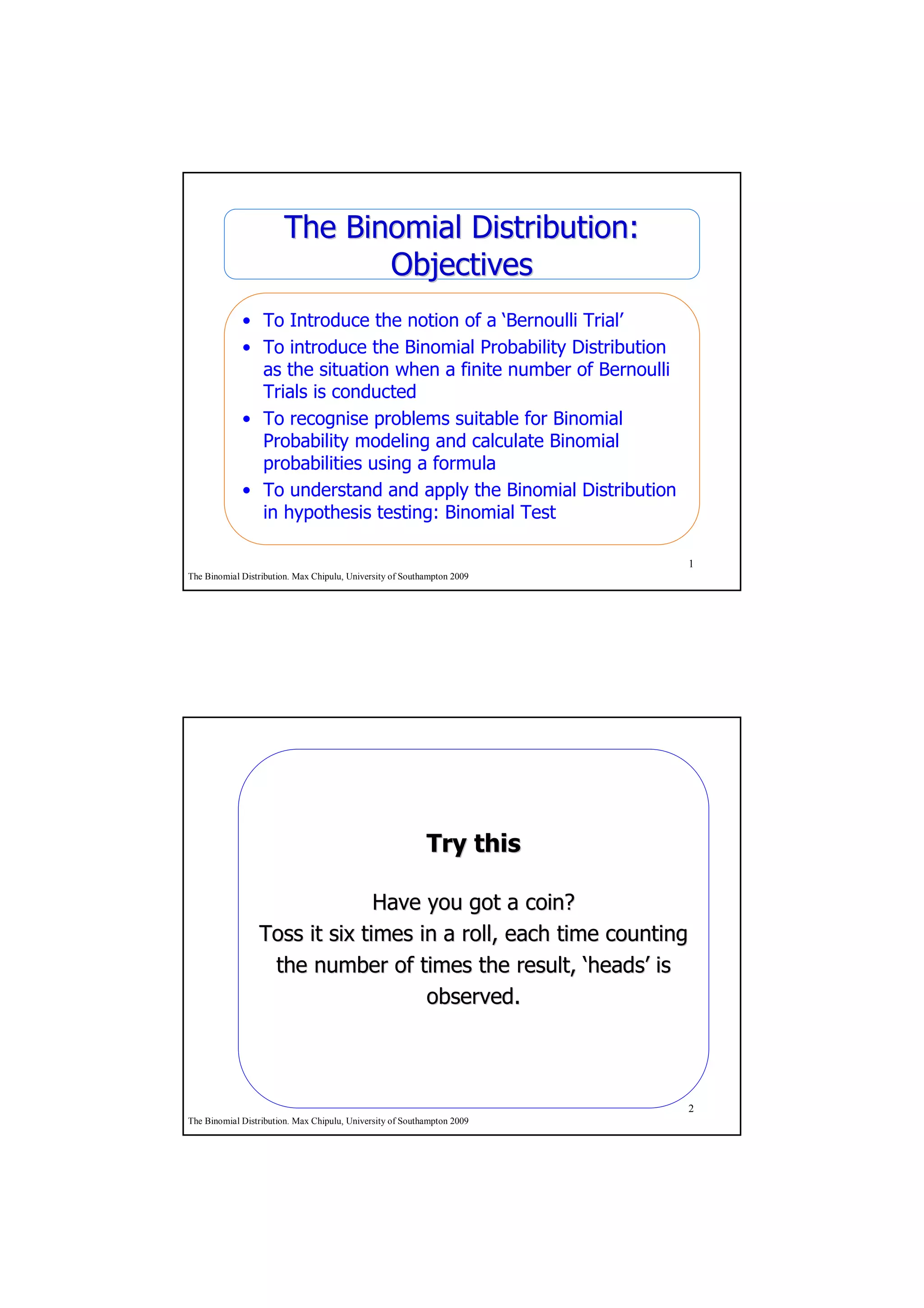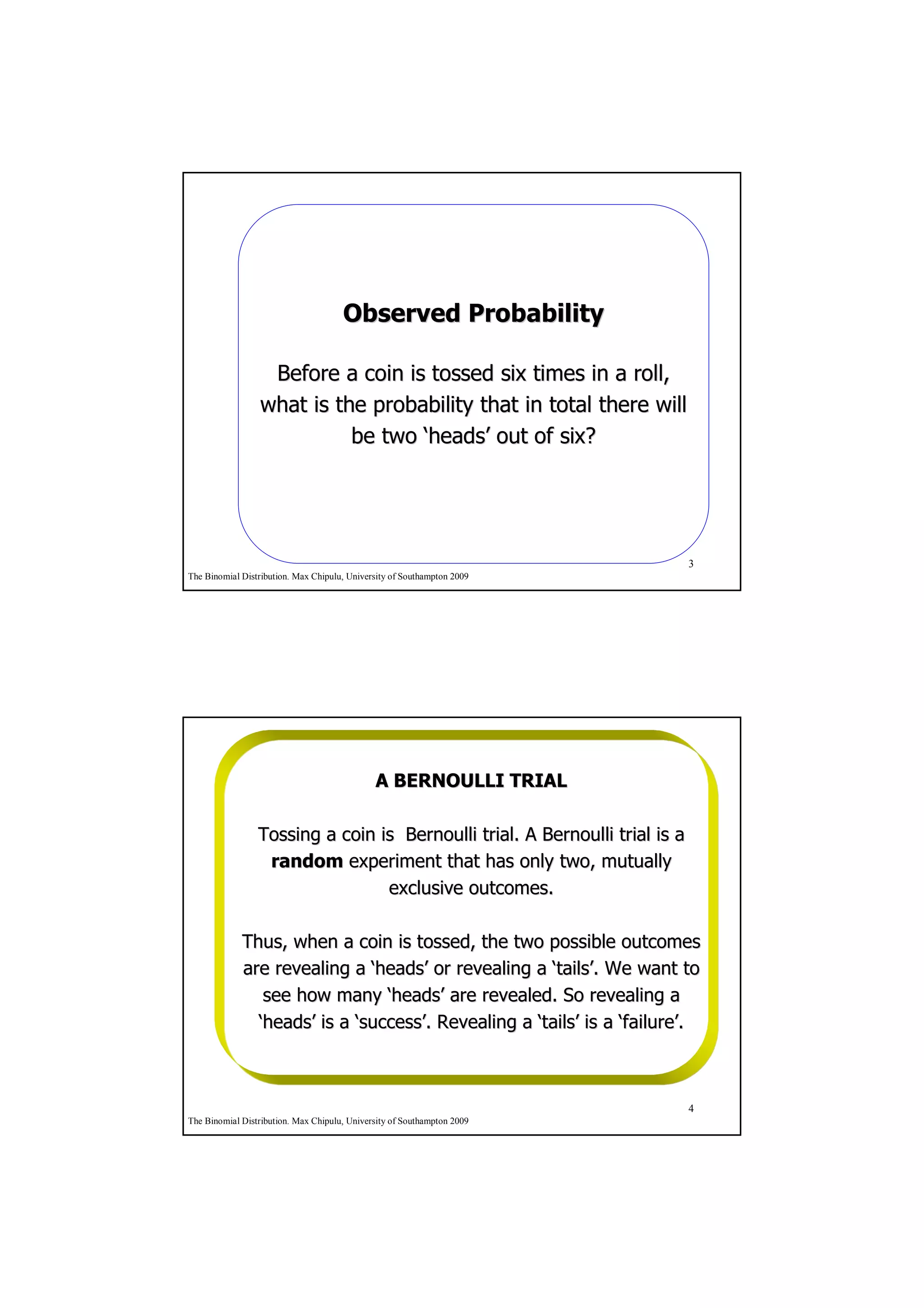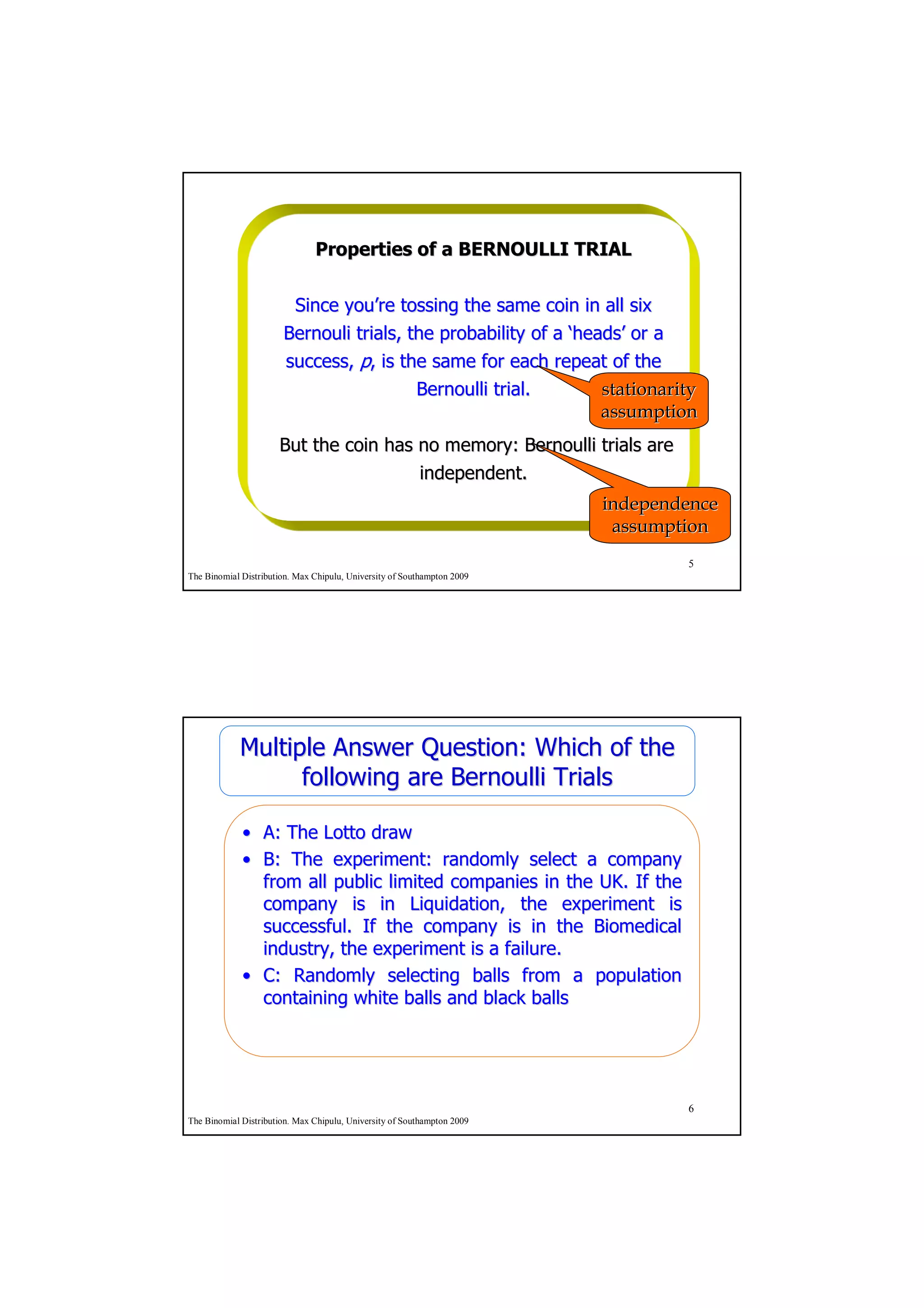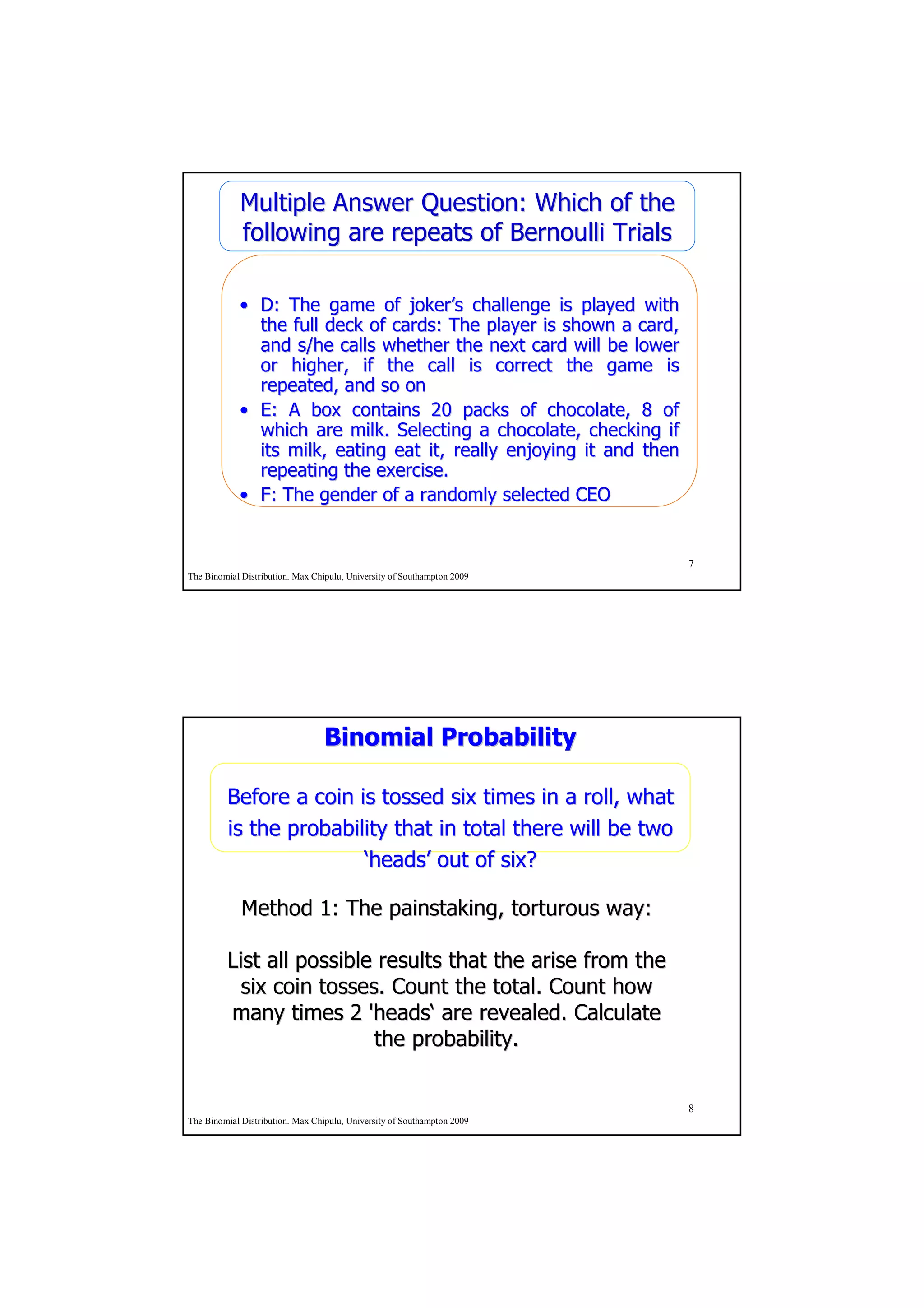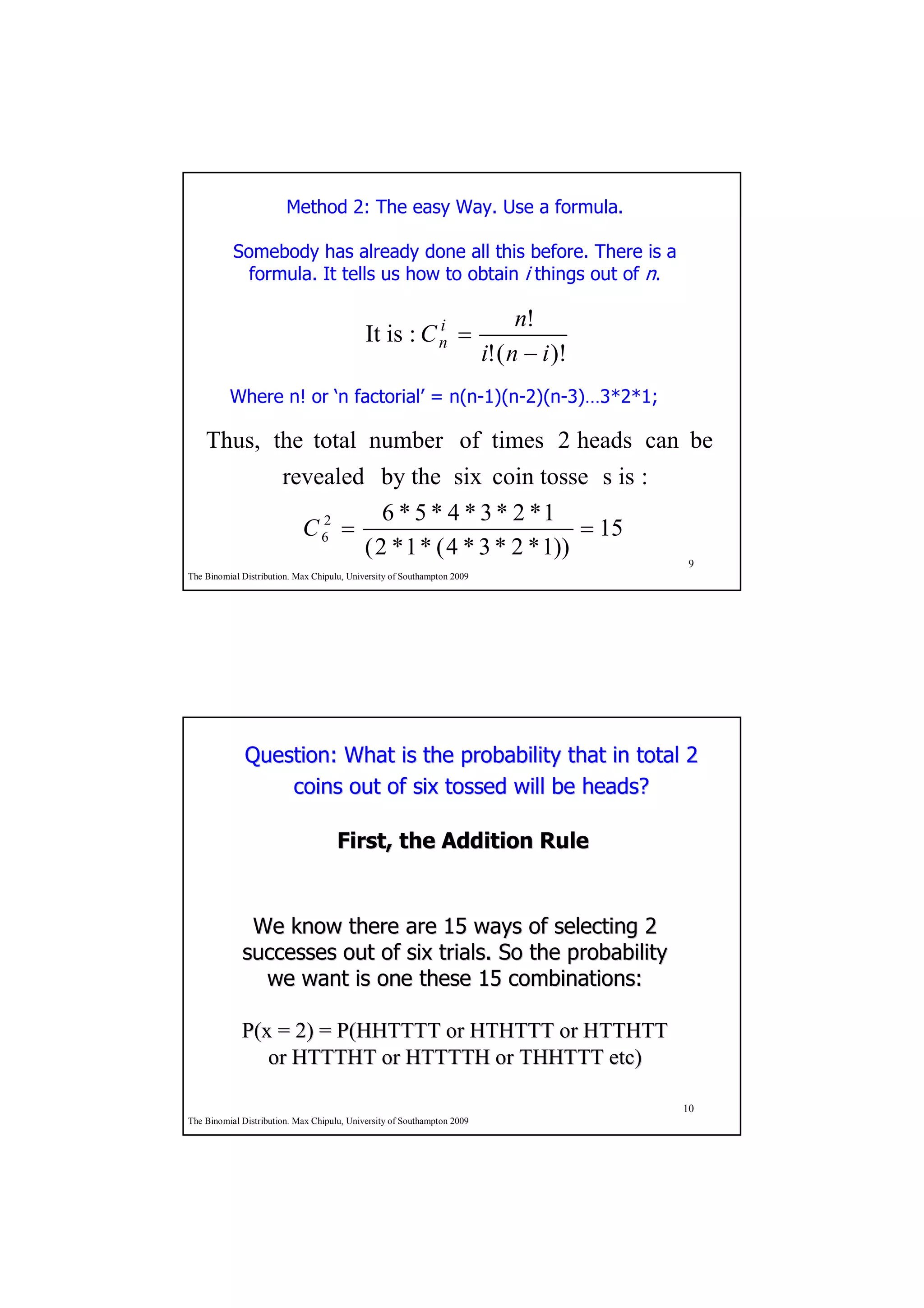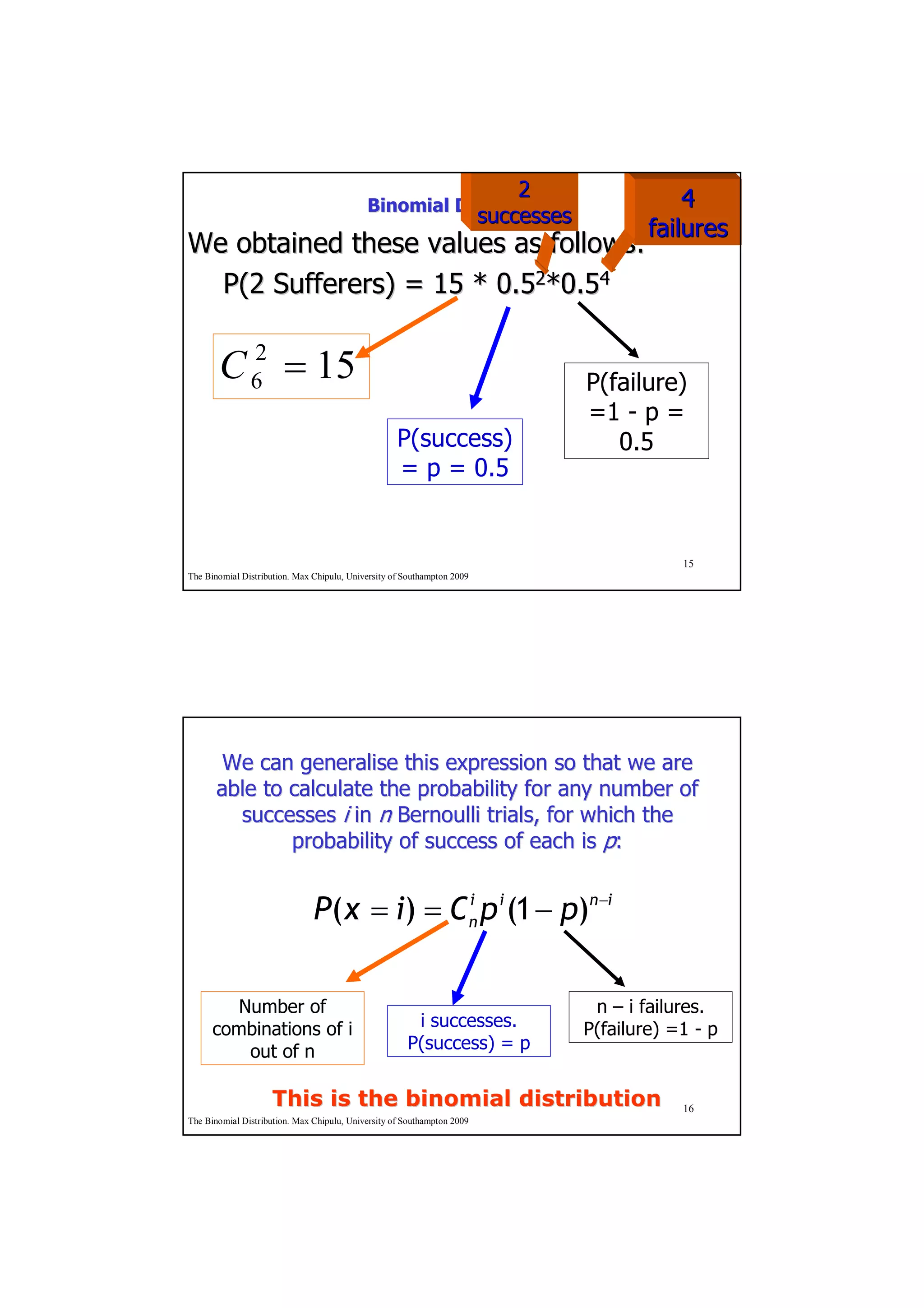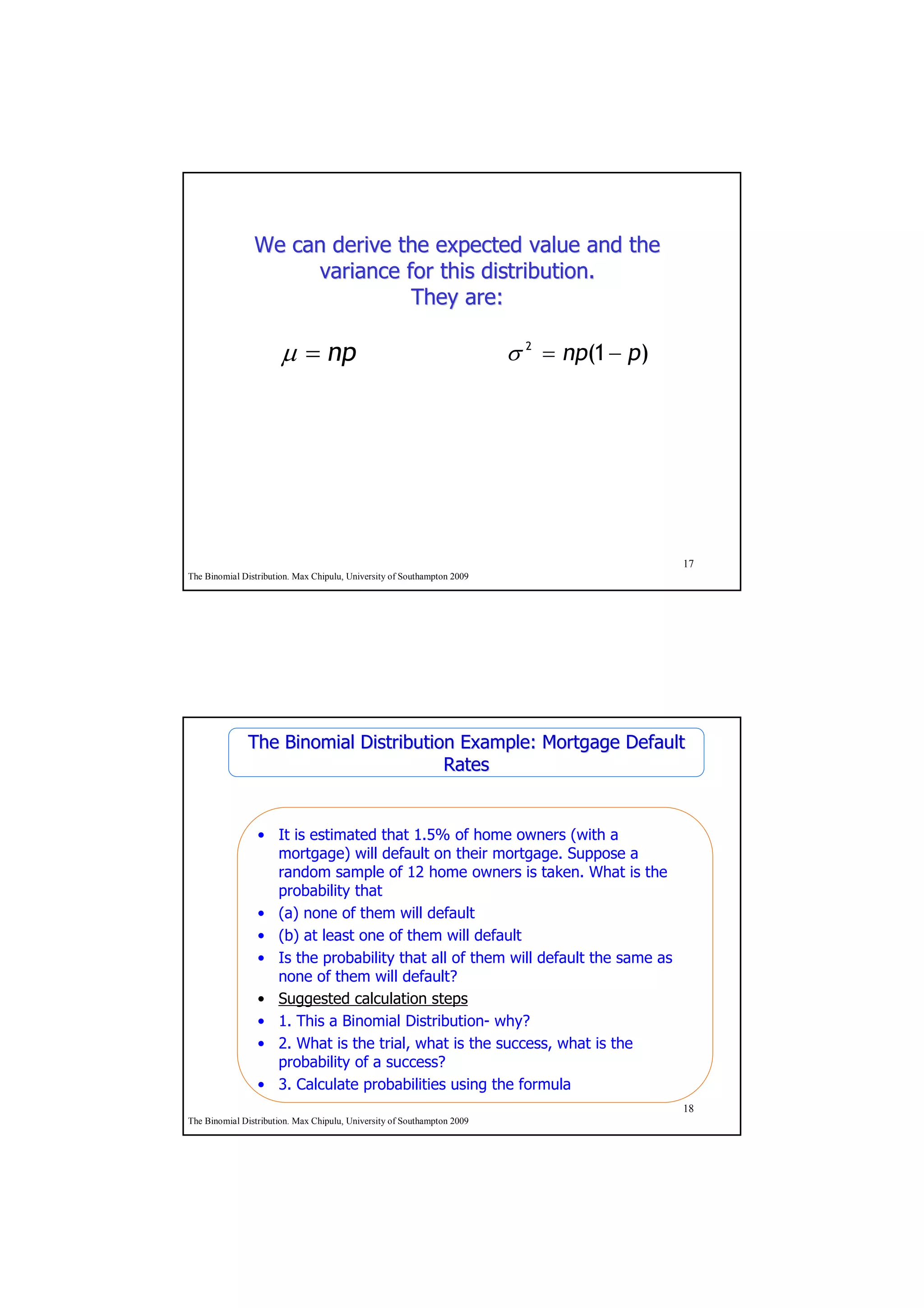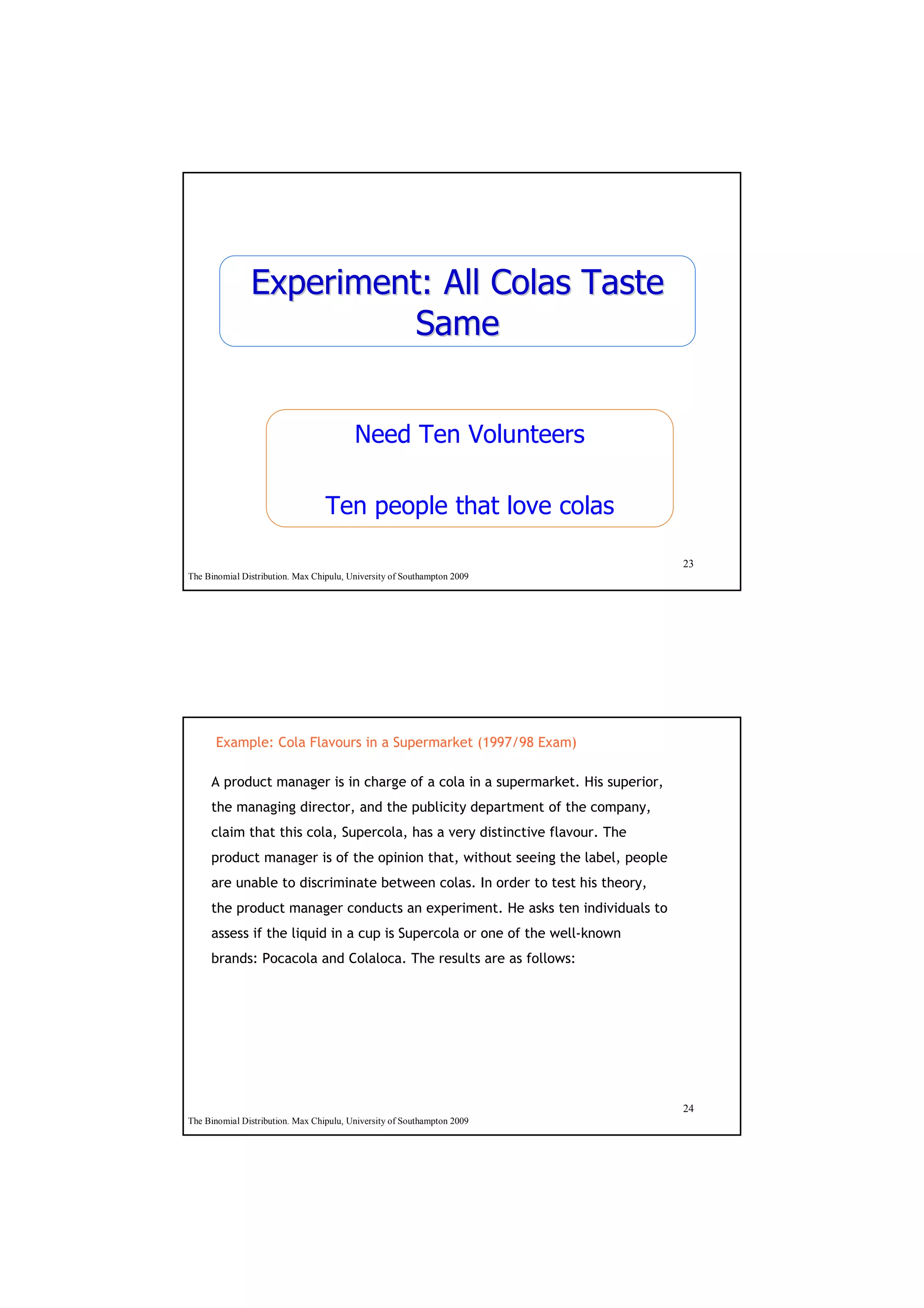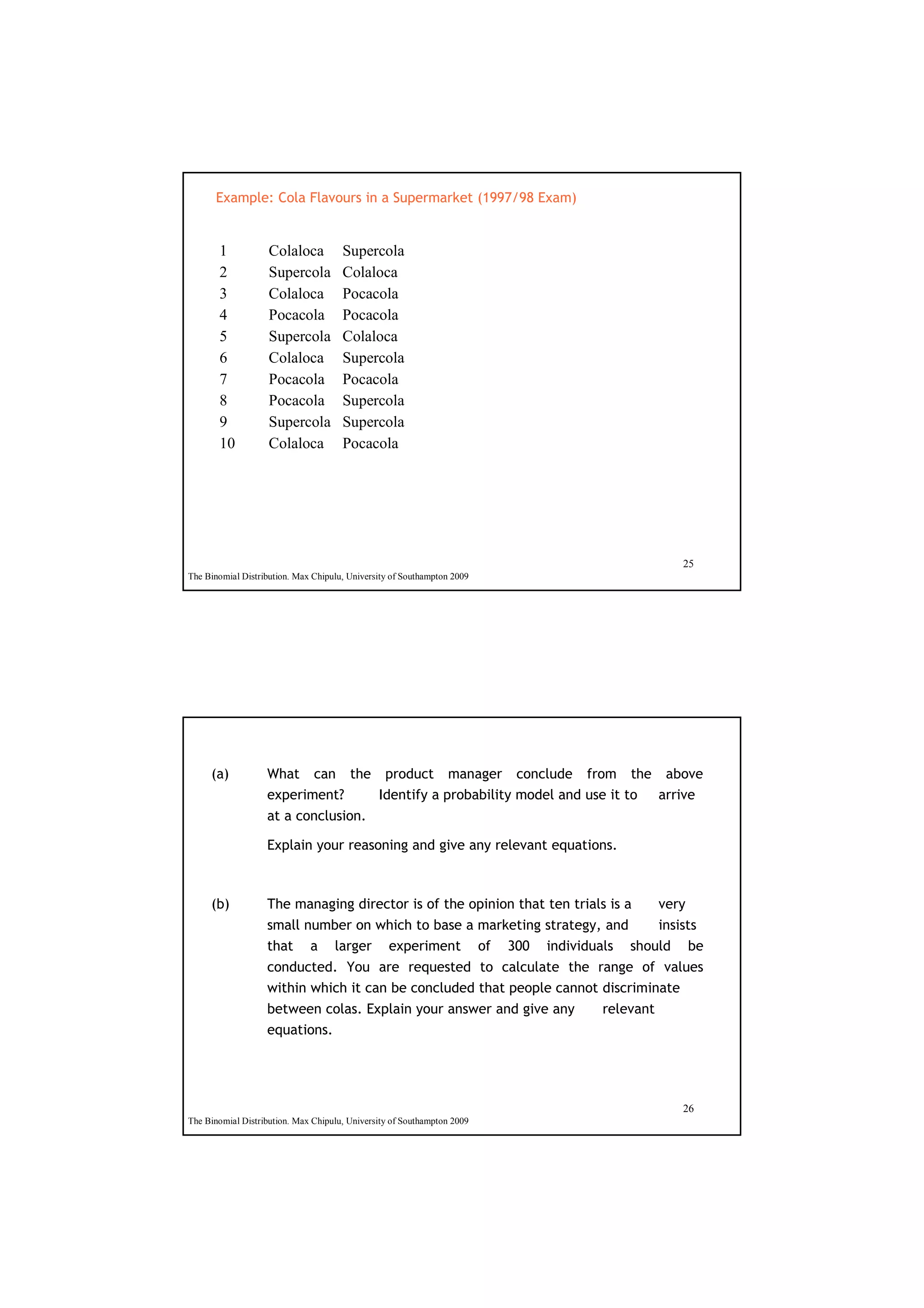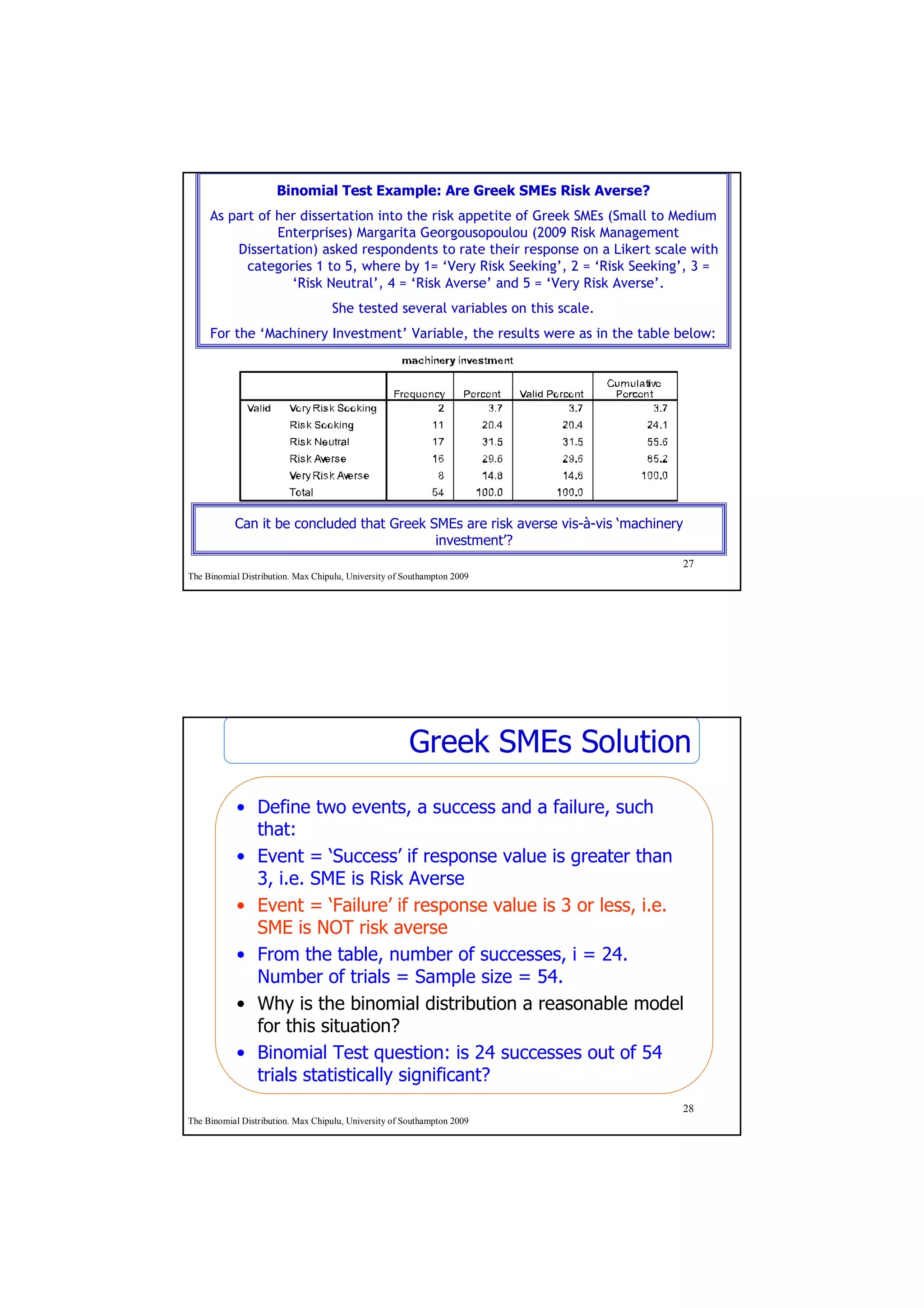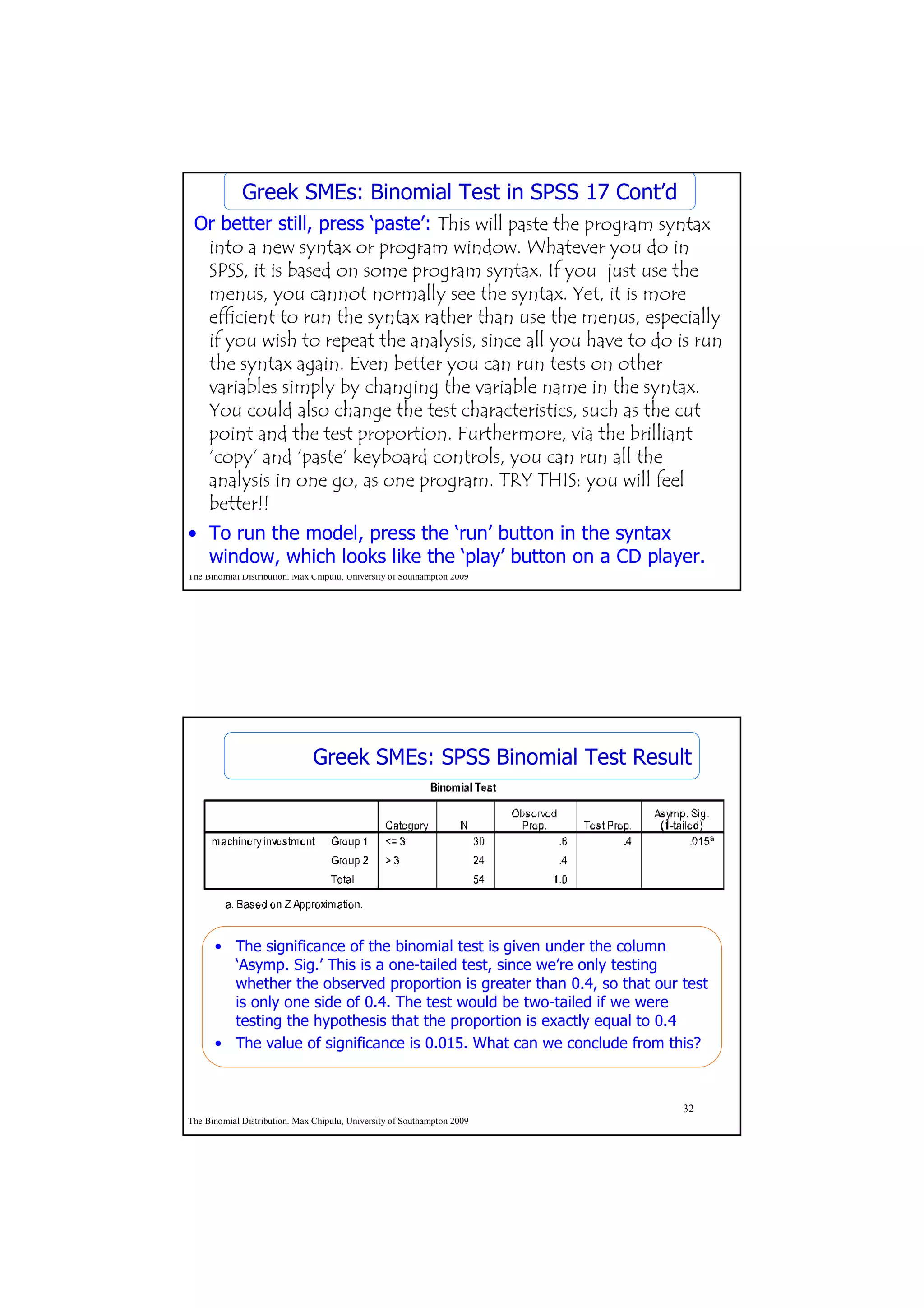The document introduces the binomial distribution and its applications. It defines a Bernoulli trial as having two mutually exclusive outcomes and explains how the binomial distribution can model situations with a fixed number of Bernoulli trials. It provides examples of calculating binomial probabilities using formulas and the SPSS binomial test. The key concepts are that the binomial distribution applies when there are a fixed number of independent yes/no trials, each with the same probability of success.
